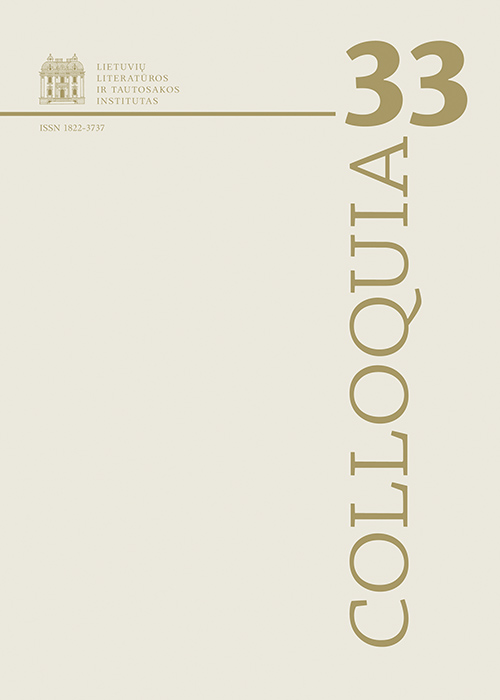The Concept of the Classic in Literature, Cinema, and Adaptations
Abstract
This article discusses differences in the concept of classicality in literature and cinema and the repercussions of these differences for the cultural role of film adaptations. The author of the article focuses first on the idea of classicality as a mechanism for the consolidation of different types of communities, and on how this mechanism functions on the level of the reception of a canon and the rules of its interpretation. What is significant here is not only the formation of a corpus of canonical texts, but also the support of cultural practices which function as a type of net in the reading and understanding of something seen as a “classic” text. These cultural practices are “reading protocols” that determine whether or not a text is seen as a classic. The author then discusses differences in how classics and classicality function in literature and film – how cinematographic innovation can fail to support and can even undermine the status of a canonical literary text and the collective experience of it. In this case, what is most important is that the normative forms created in literature and film, and which support cultural hierarchies, statuses and reputations within the broad field of culture, are not symetrical.
In the study of adaptations, this conceptual asymetry is especially important in discusssions of adaptations of literary classics in different types of cinema – in indepedent as opposed to mainstream films. If a classic is adapted for an independent film – which is often characterized by idiosyncratic poetics, a distinct distance from tradition, and a disregard for national boundaries, and which appeals to specific groups of viewers rather than a universal audience – it is unlikely that reinforcement of tradition and consolidation of large (national) communities will take place. If it is adapted for dominant, mainstream cinema, a classic’s classicality (understood as very general stylistic and narrative norms) risks unrecognizably unifying the entire canon, spanning different periods, and according it a unified reception protocol.
Besides other reasons, support of the “classic” fails to take place and the regime of adaptation falls apart or is blocked from the very beginning, when the specificities of the functioning of cinematic form (first of all, genre) work against the normativity of “the classic”. Another reason that can cause the disruption or interruption of the regime of adaptation is the “foreign” literary classic, which can only partially, if at all, enter into a “local” literary canon.
Downloads
Most read articles in this journal
- Mikhail Krutikov, Vilne, Vilne undzer Meka: A City on the Border between Old and New, East and West , Colloquia: Vol. 48 (2021)
- Valentinas Sventickas, Dalia Grinkevičiūtė ir Justinas Marcinkevičius , Colloquia: Vol. 51 (2023): Colloquia
- Akvilė Šimėnienė, Feminist Phenomenology in the Criticism of Birutė Ciplijauskaitė , Colloquia: Vol. 38 (2017)
- Aušra Jurgutienė, Literatūros kanono dirbtuves aplankius , Colloquia: Vol. 51 (2023): Colloquia
- Giedrė Smolskaitė, Reading With Attuned Ears: Music in the Plays of Kostas Ostrauskas , Colloquia: Vol. 40 (2018)
- Gitana Vanagaitė, Author guidelines and Bibliographic Data , Colloquia: Vol. 51 (2023): Colloquia
- Ramunė Bleizgienė, My and Your Ability and Disability , Colloquia: Vol. 50 (2022): Colloquia
- Gintarė Bidlauskienė , Vilnius in Jurgis Kunčinas’s Tūla: From Urban Practices towards Textual Strategies , Colloquia: Vol. 43 (2019)
- Vaidas Šeferis , One Field, Many Plots of Land , Colloquia: Vol. 44 (2020)
- Violeta Kelertas, A discussion on methodology for researching soviet literary space (Concluding discussion of the conference “Literary Field Under the Communist Regime: Structure, Functions, Illusio,” October 7–9, 2015. , Colloquia: Vol. 35 (2015)




